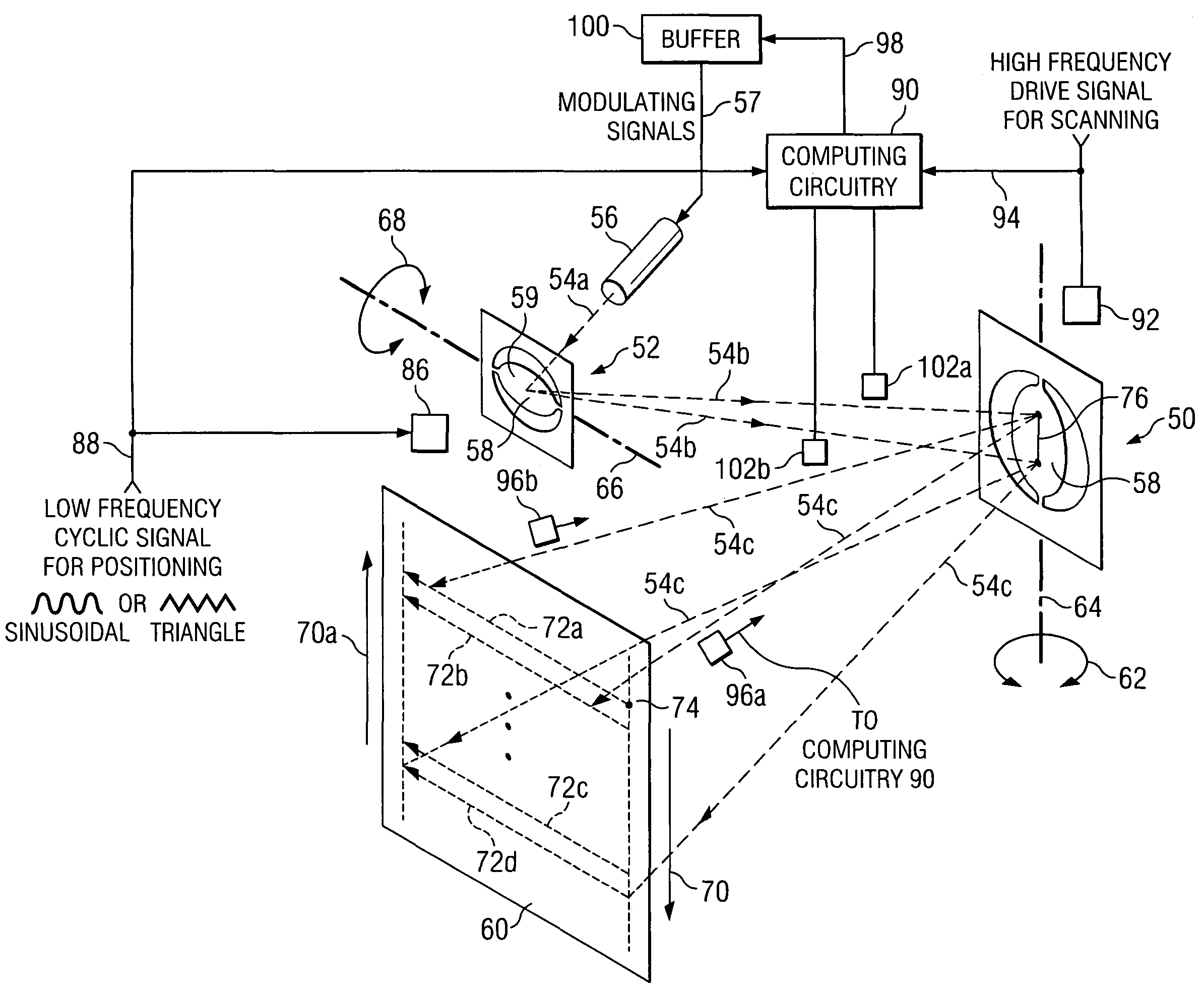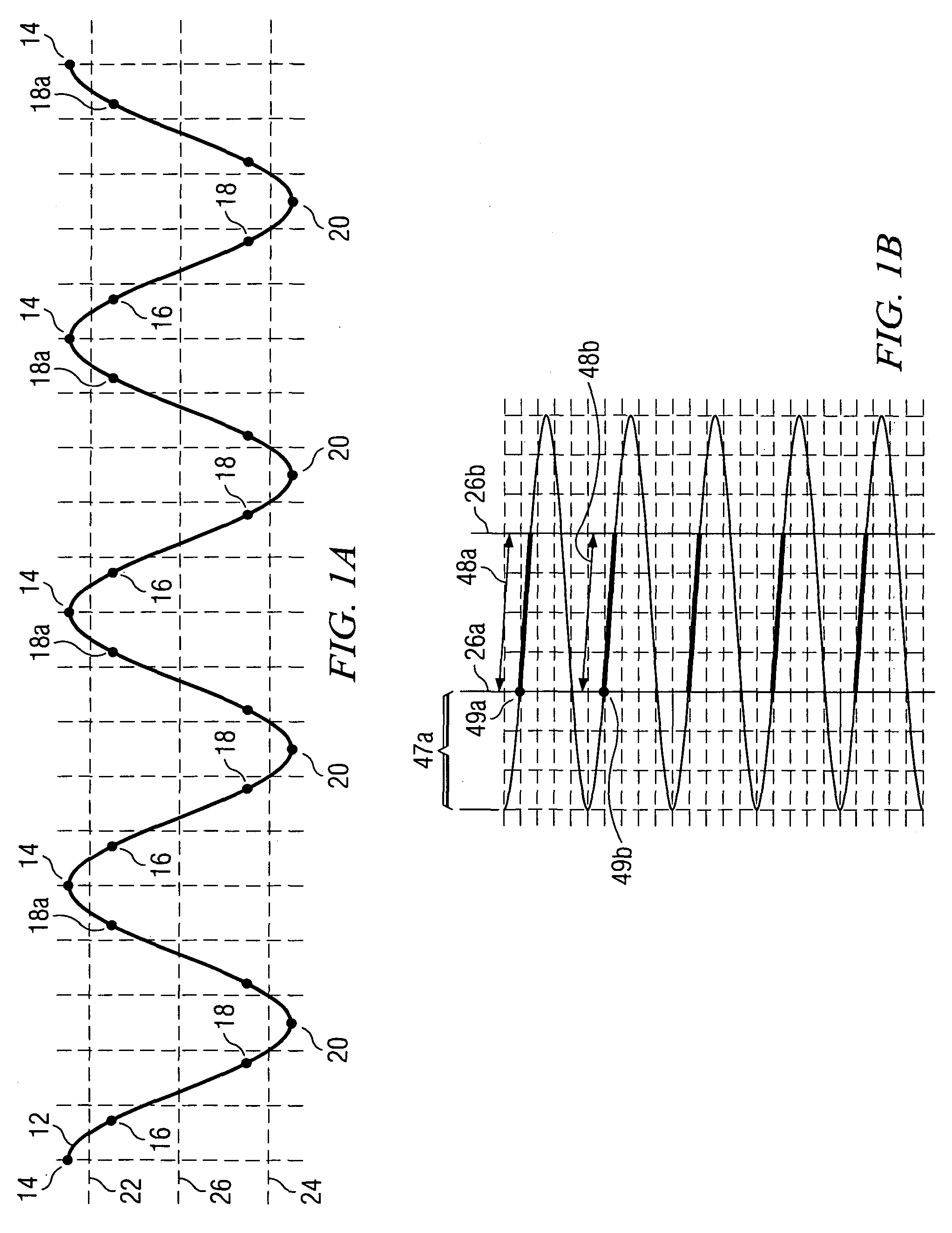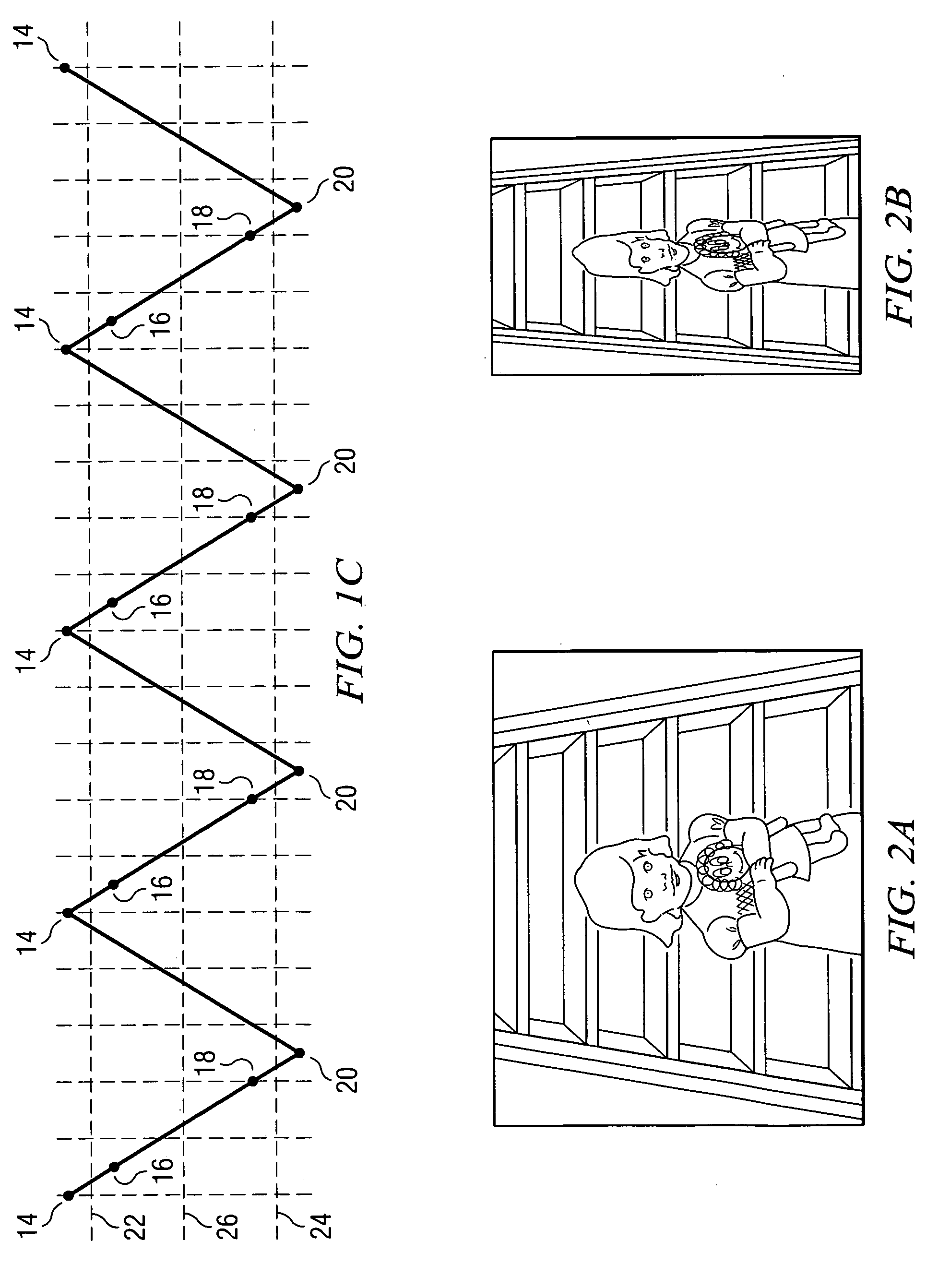Method for maintaining the phase difference of a positioning mirror as a constant with respect to a high speed resonant mirror to generate high quality images
a technology of positioning mirror and resonant mirror, which is applied in the field of video display, can solve the problems of reducing the beam envelope, reducing the amplitude of the beam sweep, and complex problems, and achieve the effect of preventing variations in the vertical positioning of the first scan lin
- Summary
- Abstract
- Description
- Claims
- Application Information
AI Technical Summary
Benefits of technology
Problems solved by technology
Method used
Image
Examples
first embodiment
[0044]Therefore, according to the invention, since the speed of both mirrors is known, and since the movement or position of both mirrors can be precisely determined at a specific time, the phase difference can be maintained as a constant by adding or removing a calculated number of the storage locations in the same manner as discussed above with respect to FIGS. 3A and 3B. However, the number of storage locations or discrete values added or subtracted to fine adjust and maintain the phase difference as a constant will typically be significantly less than the number discussed above for synchronizing the incoming data stream with the low frequency positioning mirror.
[0045]It is also important to note that adjusting (expanding or compressing) the peak portions of the cyclic slow speed drive signal is shown as being accomplished in the upper peak portions of the drive signal (the portion above line 22), while the video signal is blanked or cut off. It should also be appreciated that al...
second embodiment
[0047]Therefore, a second embodiment for maintaining or adjusting the phase difference between the arming signal and the trigger signal is to slightly modify the sample time Ts or clock rate at which a selected number of the cycle drive discrete samples are delivered. As an example only, Ts may be modified from 10 microseconds (μ) to 10.3 microseconds (μ) for a selected number of discrete values in the peak portion of the cycle and the nominal Ts would then be restored before the display portion of the cycle. This approach provides significantly improved resolution for maintaining the selected phase difference.
[0048]It should also be appreciated that although the above detailed discussion has been with respect to a “sinusoidal” slow speed drive signal, such as shown in FIG. 1A, the discussion is equally applicable to the repetitive “triangular shaped” drive signal such as illustrated in FIG. 1C. In addition, in the embodiments shown, the appropriate adjustment could also occur durin...
PUM
 Login to View More
Login to View More Abstract
Description
Claims
Application Information
 Login to View More
Login to View More - R&D
- Intellectual Property
- Life Sciences
- Materials
- Tech Scout
- Unparalleled Data Quality
- Higher Quality Content
- 60% Fewer Hallucinations
Browse by: Latest US Patents, China's latest patents, Technical Efficacy Thesaurus, Application Domain, Technology Topic, Popular Technical Reports.
© 2025 PatSnap. All rights reserved.Legal|Privacy policy|Modern Slavery Act Transparency Statement|Sitemap|About US| Contact US: help@patsnap.com



